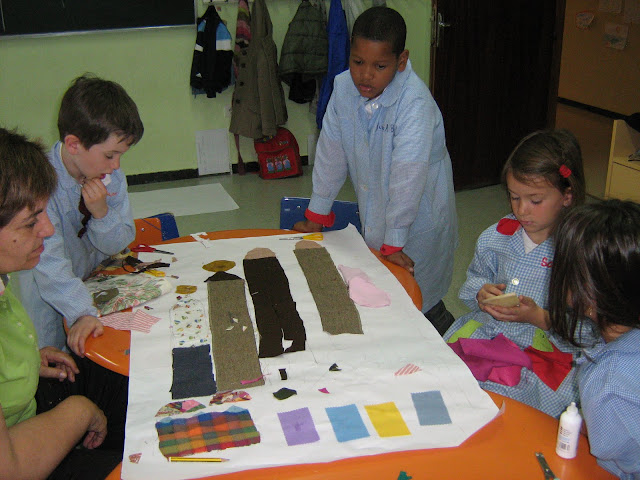Monday, May 9, 2011
Sunday, May 8, 2011
Spain textile craft work
The history of the selection of this activity has been:
Holy Week in Christianity is the last week of Lent and the week before Easter. It includes the religious holidays of Palm Sunday, Maundy Thursday (Holy Thursday) and Good Friday, and lasts from Palm Sunday (or in the Eastern, Lazarus Saturday) until, but not including, Easter Sunday, as Easter Sunday is the first day of the new season of The Great Fifty Days. It commemorates the last week of the earthly life of Jesus Christ as recorded in the Canonical gospels.
Holy Week in Spain
The "Semana Santa" is notable for featuring the procession of "pasos", lifelike wood or plaster sculptures of individual scenes of the events that happened between Jesus' arrest and his burial, or images of the Virgin Mary showing grief for the torture and killing of her son.
These pasos and tronos are physically carried on the necks of costaleros (literally "sack men", because of the costal, a sack-like cloth that they wear over their neck, to soften the burden) or "braceros" (this name is popular in Leon) , and can weigh up to five metric tonnes. The pasos are set up and maintained by hermandades and cofradías, religious brotherhoods that are common to a specific area of the city, whose precede the paso dressed in Roman military costumes or penitential robes. Those members who wish to do so wear these penitential robes with conical hats, or capirotes, used to conceal the face of the wearer. These "Nazarenos" or "Papones" (this word it´s typical from Leon) carry processional candles, may walk the city streets barefoot, and may carry shackles and chains in their feet as penance. A brass band, marching band, a drum and bugle band, or in Malaga's case a military band (such as that of the Spanish Legion or other military units) may accompany the group, playing funeral marches, religious hymns or "marchas" written for the occasion.
Materials:
• Paper Rolls
• All kinds of textile material
• Cardboard
• Glue.
The children have been motivated and highly participative in all activities.
This is the result of work of all:
 |


Bulgarian textile craft works
Weaving is an ancient craft. Weaving culture in Bulgarian lands
has been witnessed since the VI - V century before Christ. Weaving skills
passed down from generation to generation in the family circle. Girls are
growing up near the loom. In the past grown girl alone produced her dowry.
Longing to a weaver homey and its creative instinct rise weaving skills to a
level of artistic creativity.
Pupil with special education needs of Professional School of
Tourism „Dr. Vasil Beron" in Veliko Tarnovo working made of textile. Her
helping rehabilitator of visually impaired students.
Materials:
school loom, needle, healthy cotton thread, cotton yarn,
scissors, beads.
Making the base
Winding the yarn on the shuttle
Weaving
Removing the woven cloth of the loom
Decorating with beads
Subscribe to:
Comments (Atom)



































































